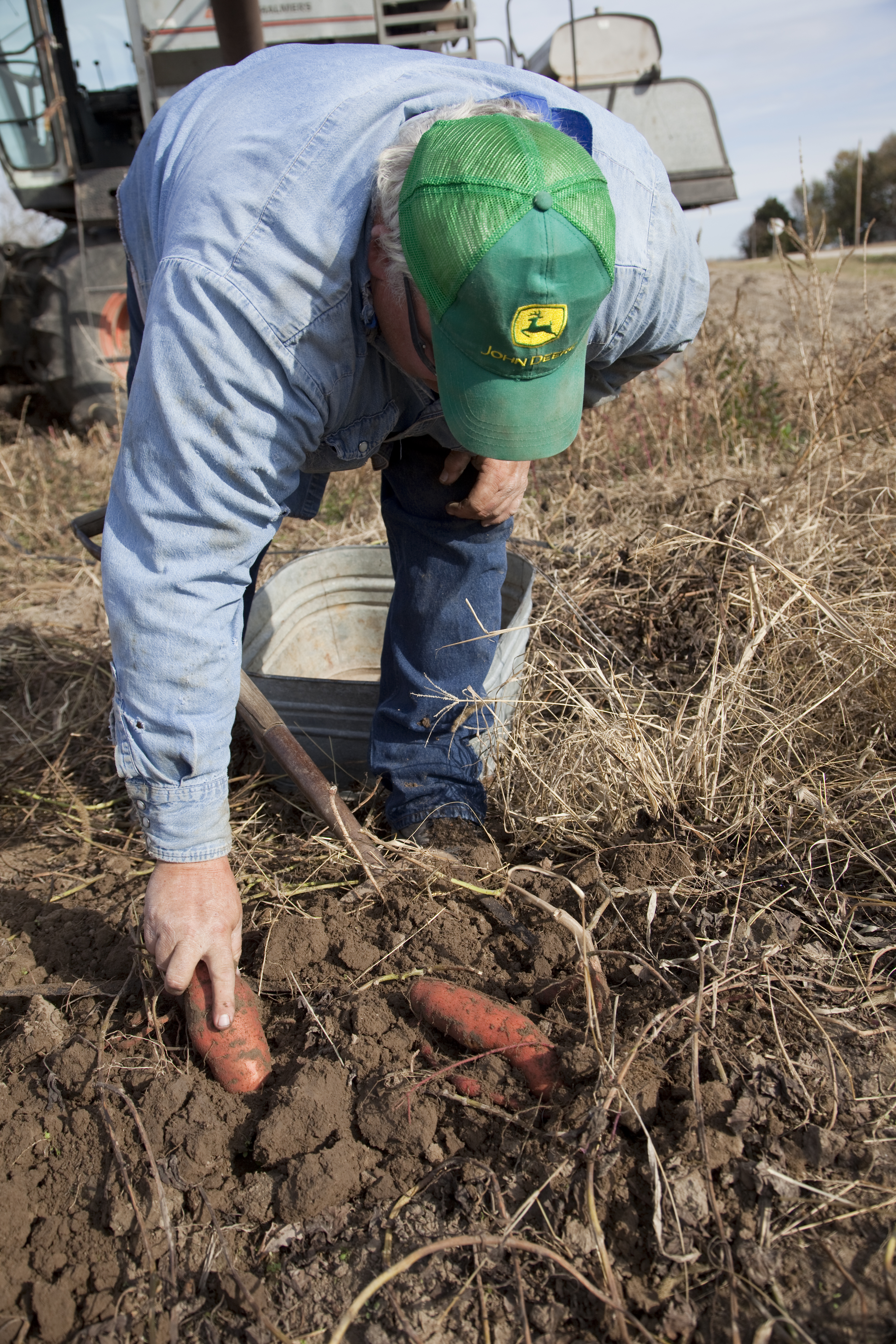Away we grow: Sweet potatoes simple, versatile garden crop

Phil Hodson not only grows sweet potatoes on his land near the Kansas River between Lawrence and Lecompton but a variety of squash and pumpkins.

Phil Hodson’s sweet potatoes come out of the soil in varying sizes.

Hodson works his farmland near the Kansas River between Lawrence and Lecompton.
Phil Hodson, who has been growing sweet potatoes in the Kansas River valley for more years than he would like to admit, thinks the nutritious root crop might just be increasing in popularity. And for good reason: The hardest part of growing sweet potatoes is harvesting — digging the roots and then properly curing the potatoes to improve flavor, texture and cooking characteristics.
Hodson is growing a popular, uniform, copper-colored variety of sweet potato called Beauregard this year but is planning to try some new selections in the years to come, especially if interest continues to grow. Beauregard, like many of the dark orange fleshed types, is typically ready for harvest in late September to October, but this fall’s mild temperatures and wet soil have prolonged the season. Hodson is hoping to get the rest of the potatoes dug before the ground freezes.
A four-pronged fork is Hodson’s recommended digging tool. Although he owns a potato digger that can be pulled behind a tractor, that machine is best for regular potatoes that are smaller and a little less tender.
After digging, cure sweet potatoes as soon as possible by placing them in a warm, humid location and leaving them there for seven to 10 days. The space should be kept about 85 degrees and humidity maintained at about 85 to 90 percent. Besides giving the potatoes an opportunity to heal over any scratches or wounds, the process will allow starch to convert to sugar and give the potatoes the sweetness for which they were named.
Sweet potatoes have the longest shelf life when stored at 50-55 degrees after they have completely cured.
If you have yet to try planting your own sweet potatoes, Hodson says, “They are pretty easy to grow once you get them started. You just need to water them until they get going.”
Since sweet potatoes grow best in warm summer weather, you can even wait to do your garden preparation, or plant the potatoes where your early season crops were growing. The recommended planting time for central and eastern Kansas is the last two weeks of May, but sweet potatoes will still grow and produce even if planted a little later. Rain kept Hodson from getting into the field until the end of June this year, which may have reduced his yield.
“I got lots of vines, but not a lot of potatoes,” Hodson says.
We both suspect the lack of hot days also played a role in the low production.
Hodson also notes, “Sometimes too much nitrogen can cause that, but I didn’t use any fertilizer this year. I tested the soil, and it was high in phosphorus and potassium, so I just didn’t use anything.”
Plant sweet potatoes in raised beds, berms or hills for best production and easiest digging. Hodson makes hills and uses drip tape for initial irrigation. Once the plants are established, he says there is usually no need to water.
You could even grow sweet potatoes in a large container on your patio if limited by space.
Garden varieties grow about the same as sweet potato varieties that are typically considered ornamental. Chartreuse and purple-leaved varieties produce sweet potatoes that are often white-fleshed, and while edible, are usually described as grainy and flavorless.
Grubs and wireworms have added additional challenges this year, and Hodson thinks he may even have voles eating a few of his sweet potatoes, but he still has enough to take to market. And I think they look pretty tasty.
— Jennifer Smith is the Douglas County Extension Agent-Horticulture and can be reached at 843-7058.

